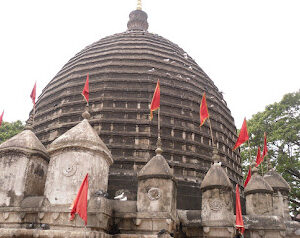The Nanda Devi National Park or Nanda Devi Biosphere Reserve, established in 1982 is a national park situated around the peak of Nanda Devi (7816 m) in Chamoli Garhwal district of Uttarakhand, in northern India. The entire park lies at an elevation of more than 3,500 m (11,500 ft) above mean sea level.
The National Park was inscribed a World Heritage Site by UNESCO in 1988. It was later expanded and renamed as Nanda Devi and Valley of Flowers National Parks in 2005.
Within the National Park lies the Nanda Devi Sanctuary, a glacial basin surrounded by a ring of peaks between 6,000 metres (19,700 ft) and 7,500 m (24,600 ft) high, and drained by the Rishi Ganga through the Rishi Ganga Gorge, a steep almost impassable defile.
The National Park is embedded in the 2,236.74 km2 (863.61 sq mi) sized Nanda Devi Biosphere Reserve, which, in turn, is encompassed in the 5,148.57 km2 (1,987.87 sq mi) buffer zone around the Nanda Devi and Valley of Flowers National Parks UNESCO site.
The best time to visit Nanda Devi National Park is from May to October.
History
Main article: Shipton–Tilman Nanda Devi expeditions
The first recorded attempt to explore the sanctuary was in 1883 by W. W. Graham, who could proceed only up to Rishi Ganga. Other attempts by explorers in 1870, (T. G. Longstaff) 1926, 1927 and 1932 (Hugh Ruttledge) did not fetch fruitful results. Eric Shipton and H. W. Tilman entered the inner sanctuary through Rishi Ganga in 1934, thus opening the extensive exploration in the sanctuary. In 1939, the area was declared as a game sanctuary.
2021 Glacial Outburst Flood
Main article: 2021 Uttarakhand flood
At approximately 10:45 a.m. IST on 7 February 2021, a flooding disaster occurred all along the Rishiganga river and its valley following a landslide, avalanche or glacial lake outburst flood of the Nanda Devi glacier.















Reviews
There are no reviews yet